Program Executive Office Soldier is the center of all things soldier, from eyewear and boots to body armor and individual weapons.
Brig. Gen. Anthony Potts, who assumed duties as Program Executive Officer Soldier in January, and his staff are making both incremental improvements to time-tested gear while also aiming to bring leap-ahead capabilities to the single soldier.
All of this work is being strongly backed by a new approach at the highest levels of the Pentagon to improve soldiers' squad-level protection and performance as the military prepares for a potential near-peer adversary that is much better equipped and trained than its recent opponents.
Here’s a look at some highlights:
1) Squad Designated Marksman Rifle: A lot of effort has been put behind making individual squads more lethal. One way to do that is to put longer range rifles and better trained marksmen in the ranks.
The unofficial slogan of PEO Soldier is “Every Bullet Counts, Every Ounce Matters.” The first part of that means hitting the target. Recently, 117 SDMRs were fielded to the 82nd Airborne Division, and advanced training will begin on that weapon in November, Potts said.
This doesn’t give each squad a sniper, but it does give each squad more lethal reach. Soldiers selected for the training will carry the Heckler and Koch G28E-110 Compact Semi-Automatic Sniper System, or CSASS. And it goes beyond infantry. Soldiers in scout and engineer squads will also go through the training.
For more coverage from the AUSA annual meeting, click here.
Most M4s max out at near 300 meters, but the CSASS will allow squads to reach out as far as 600 meters. The new rifle can fire both the M80A1 Enhanced Performance Round and the XM1158 Advanced Armor Piercing Round. It has a different buttstock and barrel twist than previous CSASS models, comes in just under 10 pounds and uses a Sig Sauer Tango 6 variable 1x6 power scope.
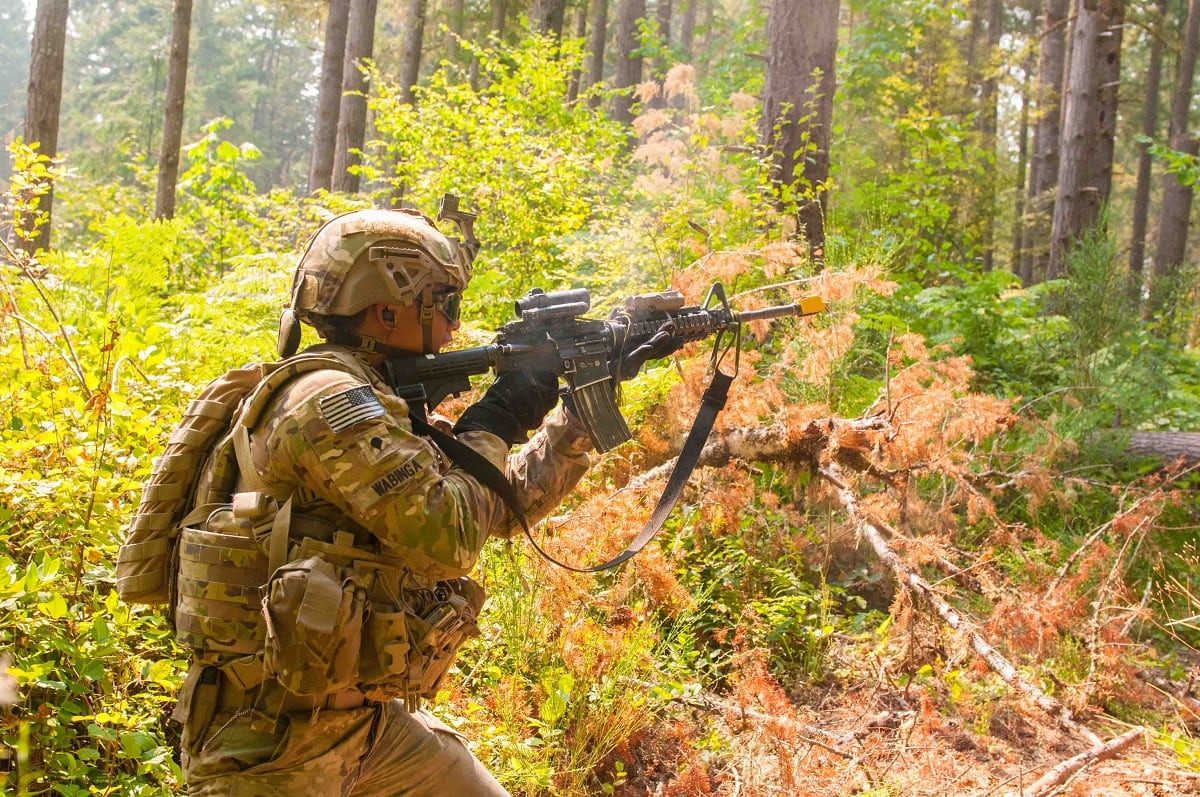
2) Integrated Helmet Protection System: The newest helmet, featuring stronger materials and an additional protective layer, is headed to theater with the 2nd Security Force Assistance Brigade. The IHPS gives rifle-level protection; past versions could only promise handgun-level safety.
The medium-sized helmet weighs about 3 pounds, cutting about 2 percent of the weight from the previous version but adding 15 percent more protection. The IHPS also has an additional applique layer that can give soldiers even greater protection, though it does add another 2 pounds.
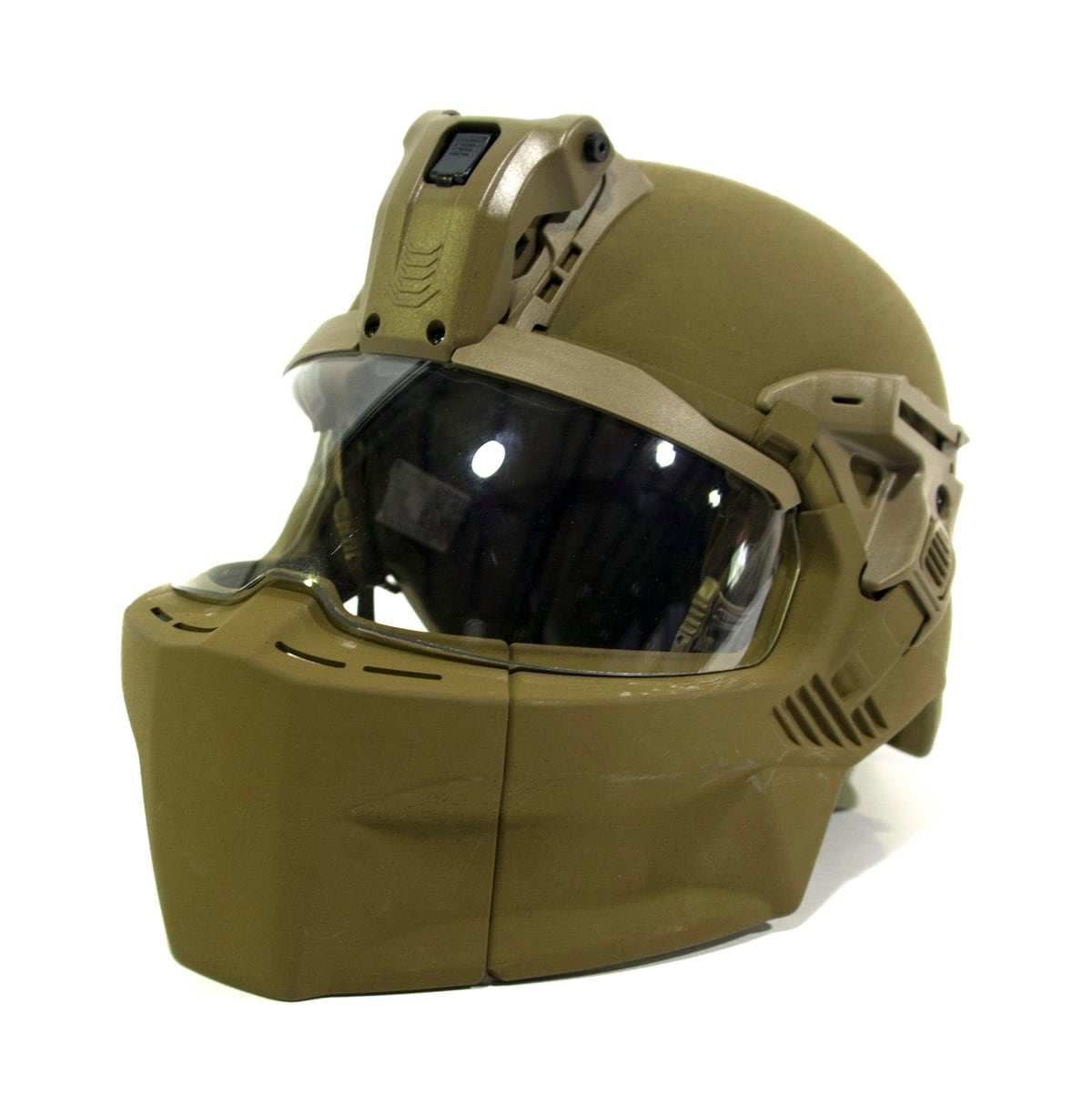
Promising research is underway with a new material that is even harder and lighter, Potts said. That material could, within the next two years, offer soldiers the enhanced IHPS, with applique protection, at a weight of 3 pounds instead of the 5 pounds it weighs now.
3) Modular Handgun System light/laser combination: The fielding in late 2017 of the newest service-wide sidearm in decades flooded gun channels.
The military-grade version of the Sig Sauer P320 was selected in early 2017. Paired with a Safariland drop holster and specially developed rounds, the M17 — and the compact M18 — fulfilled the Modular Handgun System needs of the Army.
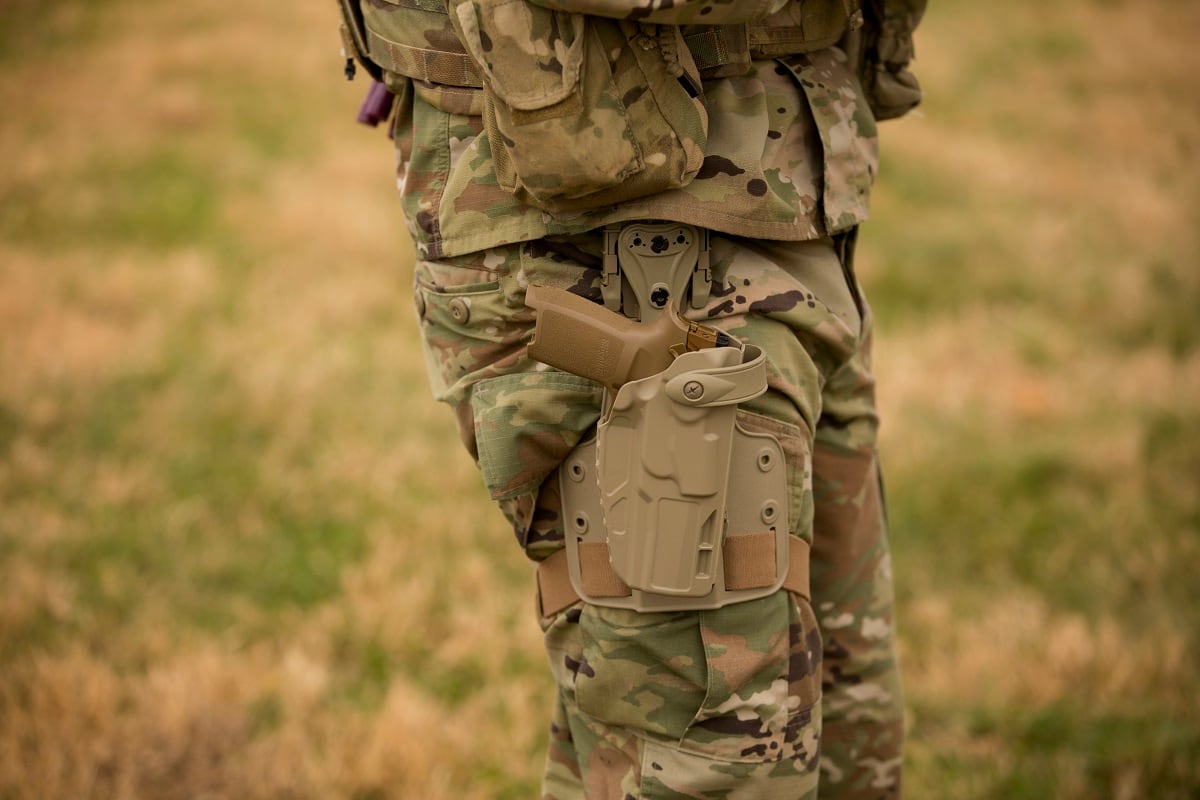
But the system isn’t done yet. Testing and selection is underway for a light/aiming laser combination device to mount on the sidearm for specific missions and units. In July, Daryl Easlick, the small arms deputy with the Lethality Branch of the Maneuver Center of Excellence, told Army Times that the device will need to have a white light function, such as those in use by military police. But it also must be compatible with night vision goggles that infantry and scouts use when they need both an infrared pointer and illuminator.
The juggling act is to get the battery power to run the white light in a small enough package so it does not affect the balance of the pistol. The enhancer must run for up to 90 minutes. Based on budget priorities, testing and requirements, the new device is expected to field next summer. Simultaneously, the Army will evaluate a different kind of holster to accommodate pistols fitted with the new device.
4) Modular Scalable Vest 2.0 and beyond: Last year, PEO Soldier showcased advancements in body armor in the form of the Modular Scalable Vest, which is nearly pounds lighter that the legacy 30-pound Improved Outer Tactical Vest, when configured for the highest threat level.
And while that system is deploying with the Army’s SFAB in the next round of deployments, the Army is already re-evaluating even that new piece of gear.
PEO Soldier held an “innovation sprint” that brought more than 30 personnel from PEO Soldier, the Maneuver Center of Excellence, Special Operations Command and the Marine Corps to hack the MSV to make it more mobile.
The result was new cuts to the armor plates that allow for better rifle manipulation and marksmanship, and a closer fit to the body for better mobility in combat. Those cuts also shaved another pound off the system, Potts said.
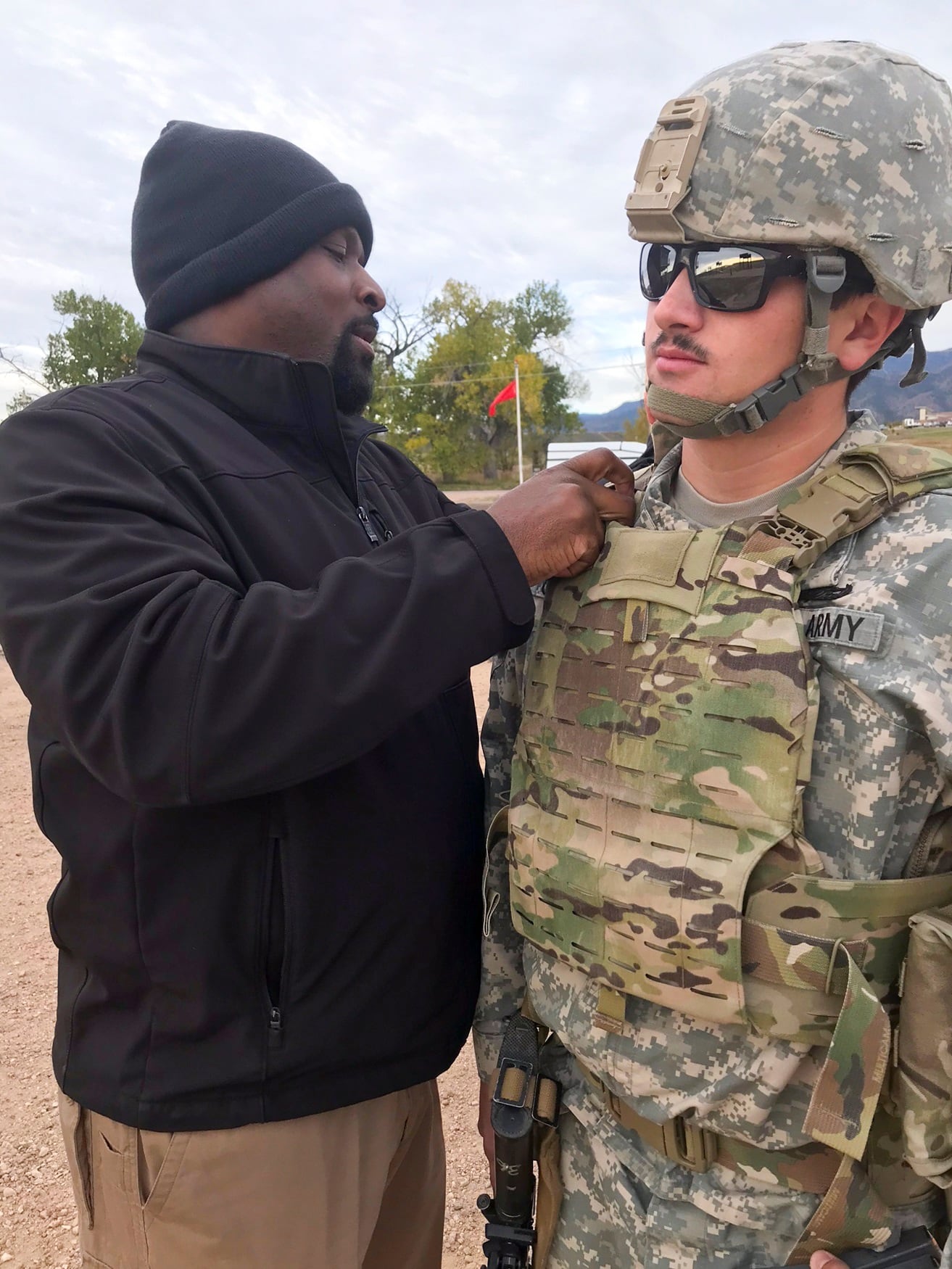
The new redesign was run by the vast classified database of shot patterns and body armor hits that’s kept at PEO Soldier. The analysis runs the potential exposure points by the historic shot placement and wounding data. Then, developers built a prototype and ran it through a combat obstacle course and shooting range test called the Load Effects Assessment Program-A.
The newest design, or MSV 2.0, is being evaluated by members of the Army’s soldier lethality cross-functional team for potential approval.
But advancements don’t end there, Potts said. A combination of new materials and a new manufacturing method being tested now at Natick Soldier Research, Development and Engineering Center, could maintain or increase current body armor strength while also reducing weight by more than a third.
Potts said it is possible that if such work proves out, soldiers could be wearing body armor with the same level of protection now available at the highest threat levels that weighs as little as 11 pounds in the next five to seven years.
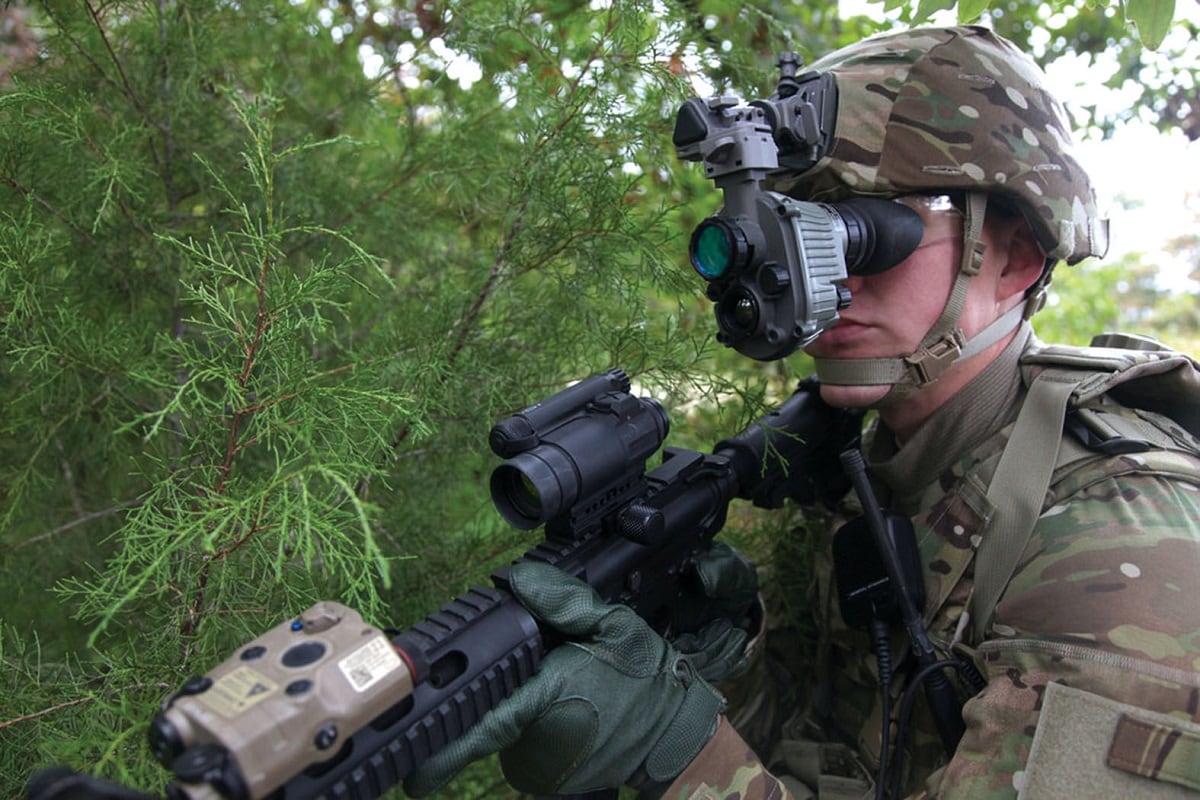
5) Enhanced Night Vision Goggle-Binocular: A top fielding priority from the secretary of the Army, the ENVG-B is now on contract as a directed requirement. In laymen’s terms, that means there’s money behind it, to the tune of about $104 million.
The advancement provided by the ENVG-B goes beyond seeing better at night. Work at PEO Soldier and associated programs not only gives soldiers better night vision, but new software would also integrate Rapid Target Acquisition capabilities, meaning soldiers can use their weapon as a camera to shoot around corners, adjust views for shooting options and even see through smoke. It can also display navigational and unit data when paired with other systems.
With funding and tech advances, the ENVG-B could be in soldiers' hands, at least for testing and evaluation, in the next year, with a focus on first equipping close combat ground units.
Todd South has written about crime, courts, government and the military for multiple publications since 2004 and was named a 2014 Pulitzer finalist for a co-written project on witness intimidation. Todd is a Marine veteran of the Iraq War.




